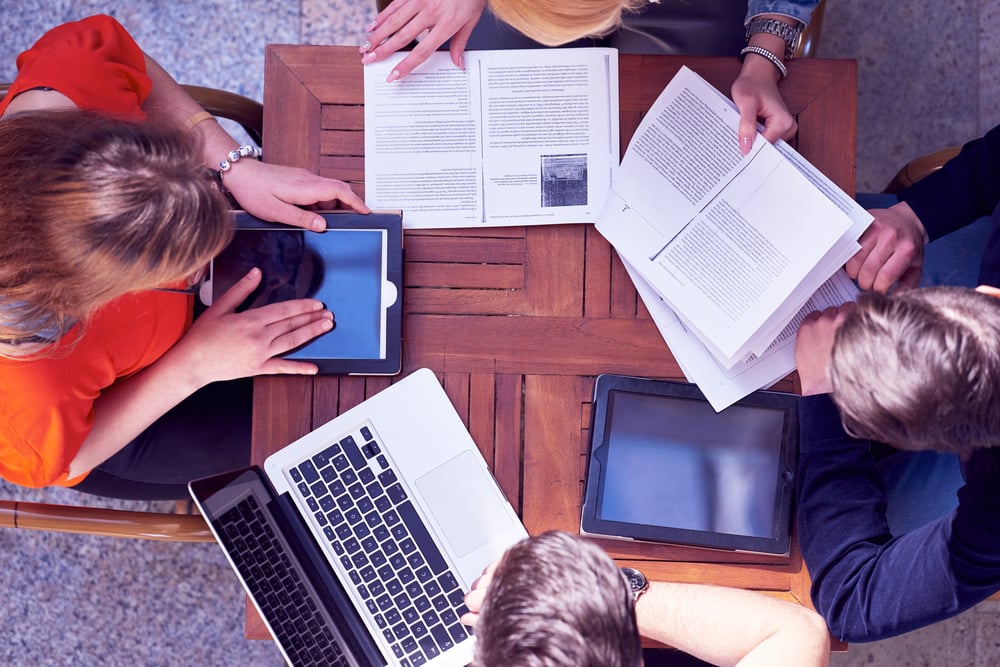
Conversation around social media just a decade ago looked very different from today. Whereas before, this article might have started with a discussion of how fast social media use was growing, it now has to acknowledge how widespread it is (seven-in-ten adult Americans use it). Where once social media was nothing more than a new fad, it has now become a regular part of our daily lives.
So rather than bemoan how social media has taken over, we can instead learn how to utilize it better. Starting with its use in the classroom.
The Case For Social Media
If asked what the most powerful form of communication is, how many would say social media? Certainly employers, college admissions, and politicians would. Nowadays, it is likely an employer or college admissions department will look at a candidate’s social media to determine if they would be a good fit. Likewise, politicians use social media to promote themselves and their platforms.
Due to its pervasive nature, social media can be a great way for students, parents, and teachers to be all on the same page regarding assignments and learning objectives. In addition, it can allow for students to ask each other questions outside of the classroom and help promote further learning.

Yet still to this day, teachers and school administrators often ban the use of phones and social media in classrooms. Responsible and safe social media use is essential to student learning, peer interaction, and staying informed. However, schools seem resistant to incorporating the use of social media in the classroom, often to the students’ detriment.
While not an exhaustive list, here are a few ways social media can be integrated into a classroom setting:
-
Keeping up with current events.
Government and history classes could use social media to analyze and discuss current events, as well as how the general public is reacting to it.
-
Creating a class page/group.
Teachers can create class groups for their students to interact with each other and help one another with homework assignments or other questions they may have.
-
Keeping parents in the loop.
Rather than parents having to rely on their kids to tell them what they are learning about, teachers can tweet or message out what students learned about each day or week. Plus it would allow parents to communicate with the teacher better.
-
Preparing for the real world.
By having students write a blog, or do presentations through a live stream or YouTube, teachers can help them gain real world experience that they can take with them to a future career.
-
Send out reminders.
Since most students actively pay attention to social media messages and alerts, it can be a great way for teachers to remind students about upcoming assignments and due dates.
There are a lot more ways social media can be used to enhance the classroom experience. If you are a teacher or school administrator, feel free to share in the comments ways you’ve used or want to use social media to help your students.
Things to Keep in Mind
Before running off to implement social media in your learning, there are a few things to keep in mind. As mentioned before, social media is one of the most powerful communication tools available. If not used responsibly, a seemingly innocent post or tweet can quickly turn sour. Further, the online world can be a dangerous place if not approached with proper precautions in place.

Here are some things to keep in mind when considering social media use in the classroom:
-
Not everyone is on social media.
Most students, teachers, and parents do use social media—the numbers don’t lie. But most doesn’t mean all. If social media becomes the main form of communication, students without it will be left out of the loop. This will hurt their ability to learn and engage with their peers.
-
Writing becomes public.
Unless using social media purely in a private group (and possibly even then), everything shared by the students will be out in the public. Since future employers and college admission offices are almost guaranteed to look at someone’s social media, be sure to have students double-check their messages before sending them out to the world.
-
Cyberbullying and online predators are real.
The world can be a dangerous place and this unfortunately doesn’t change online. Be sure to implement proper safety measures to keep students safe, in addition to teaching them what to do if they encounter someone dangerous online.
-
Social media can be a distraction.
Perhaps everyone’s first excuse for not using social media in the classroom is that it will distract students from learning and listening. This can be true, especially if proper rules and restrictions are not put into place.
It can be scary to think about a world where social media and technology are everyday occurrences in the classroom. But with the proper precautions, preparations, and creativity it can become a great tool in helping students learn and engage with each other.
Social media is here to stay. The real question now is how we will use it.

-1.png)
